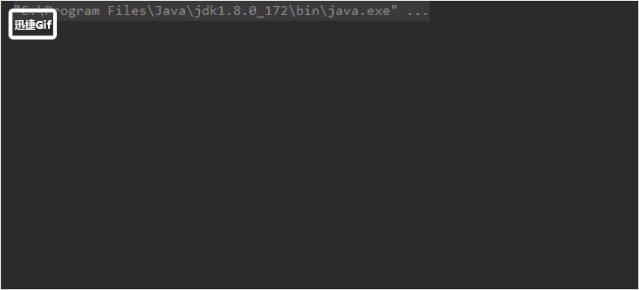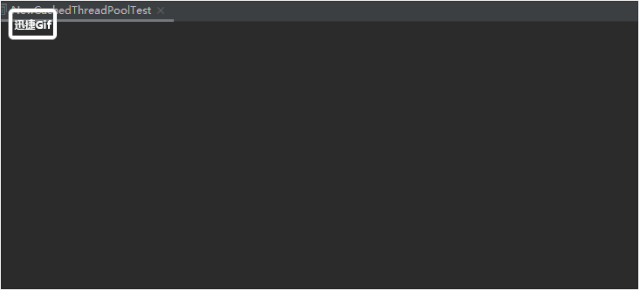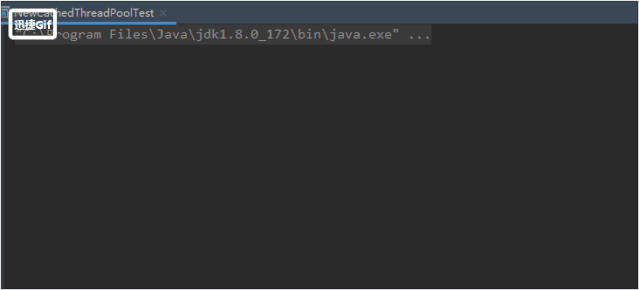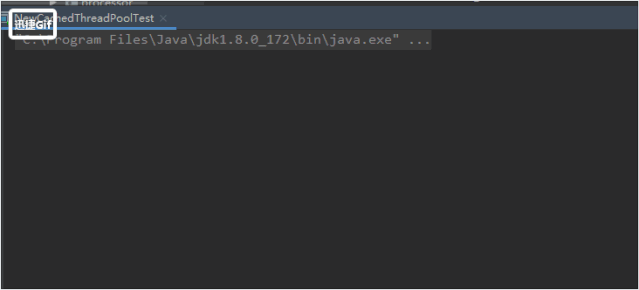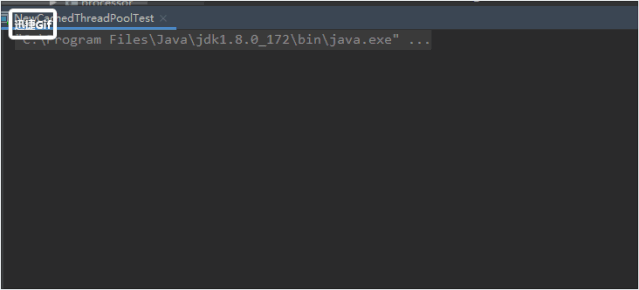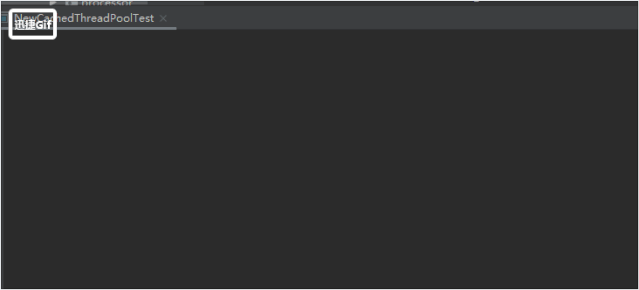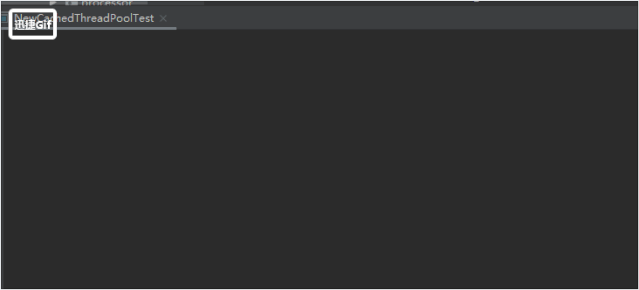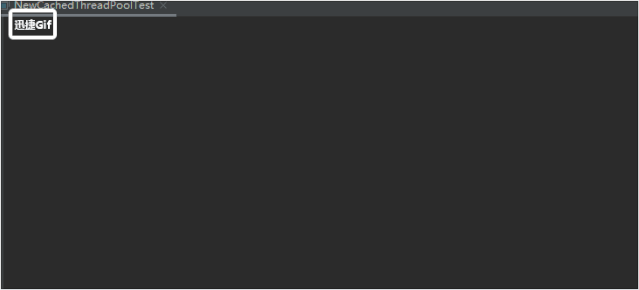Java線程池的四種用法與使用場景
一、如下方式存在的問題
- new Thread() {
- @Override
- public void run() {
- // 業(yè)務(wù)邏輯
- }
- }.start();
1、首先頻繁的創(chuàng)建、銷毀對象是一個很消耗性能的事情;2、如果用戶量比較大,導(dǎo)致占用過多的資源,可能會導(dǎo)致我們的服務(wù)由于資源不足而宕機;3、綜上所述,在實際的開發(fā)中,這種操作其實是不可取的一種方式。
二、使用線程池有什么優(yōu)點
1、線程池中線程的使用率提升,減少對象的創(chuàng)建、銷毀;2、線程池可以控制線程數(shù),有效的提升服務(wù)器的使用資源,避免由于資源不足而發(fā)生宕機等問題;
三、線程池的四種使用方式
1、newCachedThreadPool
創(chuàng)建一個線程池,如果線程池中的線程數(shù)量過大,它可以有效的回收多余的線程,如果線程數(shù)不足,那么它可以創(chuàng)建新的線程。
- public static void method() throws Exception {
- ExecutorService executor = Executors.newCachedThreadPool();
- for (int i = 0; i < 5; i++) {
- final int index = i;
- Thread.sleep(1000);
- executor.execute(new Runnable() {
- @Override
- public void run() {
- System.out.println(Thread.currentThread().getName() + " " + index);
- }
- });
- }
- }
執(zhí)行結(jié)果
通過分析我看可以看到,至始至終都由一個線程執(zhí)行,實現(xiàn)了線程的復(fù)用,并沒有創(chuàng)建多余的線程。如果當我們的業(yè)務(wù)需要一定的時間進行處理,那么將會出現(xiàn)什么結(jié)果。我們來模擬一下。
可以明顯的看出,現(xiàn)在就需要幾條線程來交替執(zhí)行。
不足:這種方式雖然可以根據(jù)業(yè)務(wù)場景自動的擴展線程數(shù)來處理我們的業(yè)務(wù),但是最多需要多少個線程同時處理缺是我們無法控制的;
優(yōu)點:如果當?shù)诙€任務(wù)開始,第一個任務(wù)已經(jīng)執(zhí)行結(jié)束,那么第二個任務(wù)會復(fù)用第一個任務(wù)創(chuàng)建的線程,并不會重新創(chuàng)建新的線程,提高了線程的復(fù)用率;
2、newFixedThreadPool
這種方式可以指定線程池中的線程數(shù)。舉個栗子,如果一間澡堂子最大只能容納20個人同時洗澡,那么后面來的人只能在外面排隊等待。如果硬往里沖,那么只會出現(xiàn)一種情景,摩擦摩擦...
首先測試一下最大容量為一個線程,那么會不會是我們預(yù)測的結(jié)果。
- public static void method_01() throws InterruptedException {
- ExecutorService executor = Executors.newFixedThreadPool(1);
- for (int i = 0; i < 10; i++) {
- Thread.sleep(1000);
- final int index = i;
- executor.execute(() -> {
- try {
- Thread.sleep(2 * 1000);
- } catch (InterruptedException e) {
- e.printStackTrace();
- }
- System.out.println(Thread.currentThread().getName() + " " + index);
- });
- }
- executor.shutdown();
- }
執(zhí)行結(jié)果
我們改為3條線程再來看下結(jié)果
優(yōu)點:兩個結(jié)果綜合說明,newFixedThreadPool的線程數(shù)是可以進行控制的,因此我們可以通過控制最大線程來使我們的服務(wù)器打到最大的使用率,同事又可以保證及時流量突然增大也不會占用服務(wù)器過多的資源。
3、newScheduledThreadPool
該線程池支持定時,以及周期性的任務(wù)執(zhí)行,我們可以延遲任務(wù)的執(zhí)行時間,也可以設(shè)置一個周期性的時間讓任務(wù)重復(fù)執(zhí)行。 該線程池中有以下兩種延遲的方法。
- scheduleAtFixedRate
測試一
- public static void method_02() {
- ScheduledExecutorService executor = Executors.newScheduledThreadPool(5);
- executor.scheduleAtFixedRate(new Runnable() {
- @Override
- public void run() {
- long start = new Date().getTime();
- System.out.println("scheduleAtFixedRate 開始執(zhí)行時間:" +
- DateFormat.getTimeInstance().format(new Date()));
- try {
- Thread.sleep(5000);
- } catch (InterruptedException e) {
- e.printStackTrace();
- }
- long end = new Date().getTime();
- System.out.println("scheduleAtFixedRate 執(zhí)行花費時間=" + (end - start) / 1000 + "m");
- System.out.println("scheduleAtFixedRate 執(zhí)行完成時間:" + DateFormat.getTimeInstance().format(new Date()));
- System.out.println("======================================");
- }
- }, 1, 5, TimeUnit.SECONDS);
- }
執(zhí)行結(jié)果
測試二
總結(jié):以上兩種方式不同的地方是任務(wù)的執(zhí)行時間,如果間隔時間大于任務(wù)的執(zhí)行時間,任務(wù)不受執(zhí)行時間的影響。如果間隔時間小于任務(wù)的執(zhí)行時間,那么任務(wù)執(zhí)行結(jié)束之后,會立馬執(zhí)行,至此間隔時間就會被打亂。
- scheduleWithFixedDelay
測試一
- public static void method_03() {
- ScheduledExecutorService executor = Executors.newScheduledThreadPool(2);
- executor.scheduleWithFixedDelay(new Runnable() {
- @Override
- public void run() {
- long start = new Date().getTime();
- System.out.println("scheduleWithFixedDelay 開始執(zhí)行時間:" +
- DateFormat.getTimeInstance().format(new Date()));
- try {
- Thread.sleep(1000);
- } catch (InterruptedException e) {
- e.printStackTrace();
- }
- long end = new Date().getTime();
- System.out.println("scheduleWithFixedDelay執(zhí)行花費時間=" + (end - start) / 1000 + "m");
- System.out.println("scheduleWithFixedDelay執(zhí)行完成時間:"
- + DateFormat.getTimeInstance().format(new Date()));
- System.out.println("======================================");
- }
- }, 1, 2, TimeUnit.SECONDS);
- }
執(zhí)行結(jié)果
測試二
- public static void method_03() {
- ScheduledExecutorService executor = Executors.newScheduledThreadPool(2);
- executor.scheduleWithFixedDelay(new Runnable() {
- @Override
- public void run() {
- long start = new Date().getTime();
- System.out.println("scheduleWithFixedDelay 開始執(zhí)行時間:" +
- DateFormat.getTimeInstance().format(new Date()));
- try {
- Thread.sleep(5000);
- } catch (InterruptedException e) {
- e.printStackTrace();
- }
- long end = new Date().getTime();
- System.out.println("scheduleWithFixedDelay執(zhí)行花費時間=" + (end - start) / 1000 + "m");
- System.out.println("scheduleWithFixedDelay執(zhí)行完成時間:"
- + DateFormat.getTimeInstance().format(new Date()));
- System.out.println("======================================");
- }
- }, 1, 2, TimeUnit.SECONDS);
- }
執(zhí)行結(jié)果
總結(jié):同樣的,跟scheduleWithFixedDelay測試方法一樣,可以測出scheduleWithFixedDelay的間隔時間不會受任務(wù)執(zhí)行時間長短的影響。
4、newSingleThreadExecutor
這是一個單線程池,至始至終都由一個線程來執(zhí)行。
- public static void method_04() {
- ExecutorService executor = Executors.newSingleThreadExecutor();
- for (int i = 0; i < 5; i++) {
- final int index = i;
- executor.execute(() -> {
- try {
- Thread.sleep(2 * 1000);
- } catch (InterruptedException e) {
- e.printStackTrace();
- }
- System.out.println(Thread.currentThread().getName() + " " + index);
- });
- }
- executor.shutdown();
- }
執(zhí)行結(jié)果
四、線程池的作用
線程池的作用主要是為了提升系統(tǒng)的性能以及使用率。文章剛開始就提到,如果我們使用最簡單的方式創(chuàng)建線程,如果用戶量比較大,那么就會產(chǎn)生很多創(chuàng)建和銷毀線程的動作,這會導(dǎo)致服務(wù)器在創(chuàng)建和銷毀線程上消耗的性能可能要比處理實際業(yè)務(wù)花費的時間和性能更多。線程池就是為了解決這種這種問題而出現(xiàn)的。
同樣思想的設(shè)計還有很多,比如數(shù)據(jù)庫連接池,由于頻繁的連接數(shù)據(jù)庫,然而創(chuàng)建連接是一個很消耗性能的事情,所有數(shù)據(jù)庫連接池就出現(xiàn)了。















